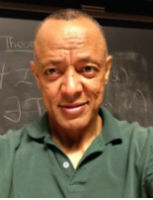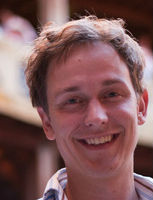program
speakers
register
directions
contact
graph theory notes
Theory
Theory
Saturday, May 9, 2015
10:00am – 5:00pm
Bronx Community College Department of Math and Computer Science, CUNY
Sponsored by The Metropolitan New York Section of
THE MATHEMATICAL ASSOCIATION OF AMERICA
speakers

|
Yared Nigussie
Industrial Engineering and Operations Research Dept.,
Columbia University, New York, NY
|
|
Extending theorems on finite labelled trees
Since the early 1960's a number of important results have emerged in study- ing the class of finite labelled trees. In this talk, we will give a brief tour of some of the remarkable results found in the past nearly six decades, and then we will introduce recently developed trees that are iteratively labelled by labelled trees. As a consequence, several of the above mentioned theorems are extended and we will discuss why this extension is useful and exciting.
|
|
|
|
|
|
|
|
|
|
|

|
Simon Smith
Department of Mathematics,
City Tech (CUNY), Brooklyn, NY
|
|
Breaking symmetries of infinite graphs
Symmetry breaking involves coloring parts of a structure in such a way that all the symmetry of the structure is destroyed. Typically this takes the form of {\em distinguishing} a graph: coloring vertices in such a way that no nontrivial automorphism of the graph preserves the coloring.
Many questions about distinguishability have the virtue of being easy to state and very difficult to solve. For example, the only known proof of one of the most important results on distinguishing finite structures (due to P. Cameron, P. Neumann and J. Saxl (1984) and A. Seress (1997)) relies upon the classification of the finite simple groups. Recent work looking at the distinguishability of infinite structures has produced a large body of work using tools from surprisingly diverse areas of mathematics: permutation groups, combinatorics, model theory, topological groups and probability theory. It has also raised a number of intriguing conjectures, including Tucker's Infinite Motion Conjecture.
In this talk, I'll give an introduction to the distinguishability of infinite graphs. I'll describe recent results, open problems and new directions for the subject. I'll assume nothing more than a familiarity with graphs, so this talk will be accessible to undergraduates.
|



